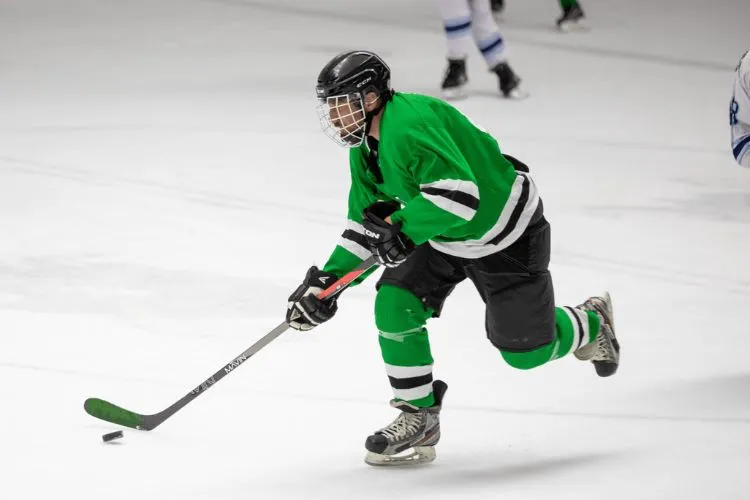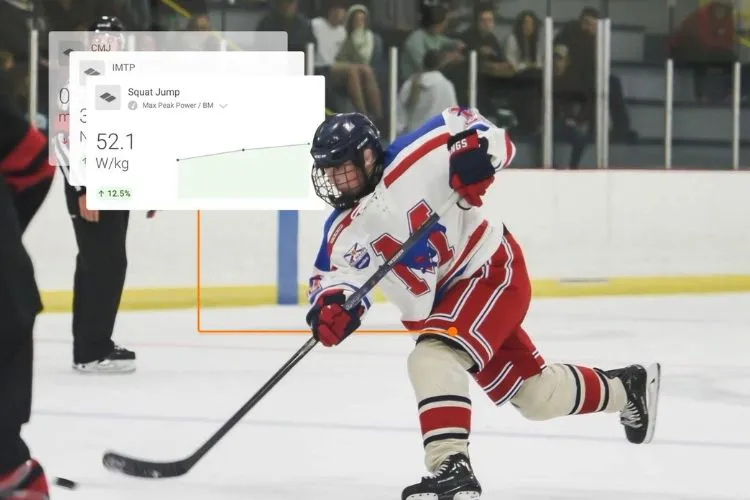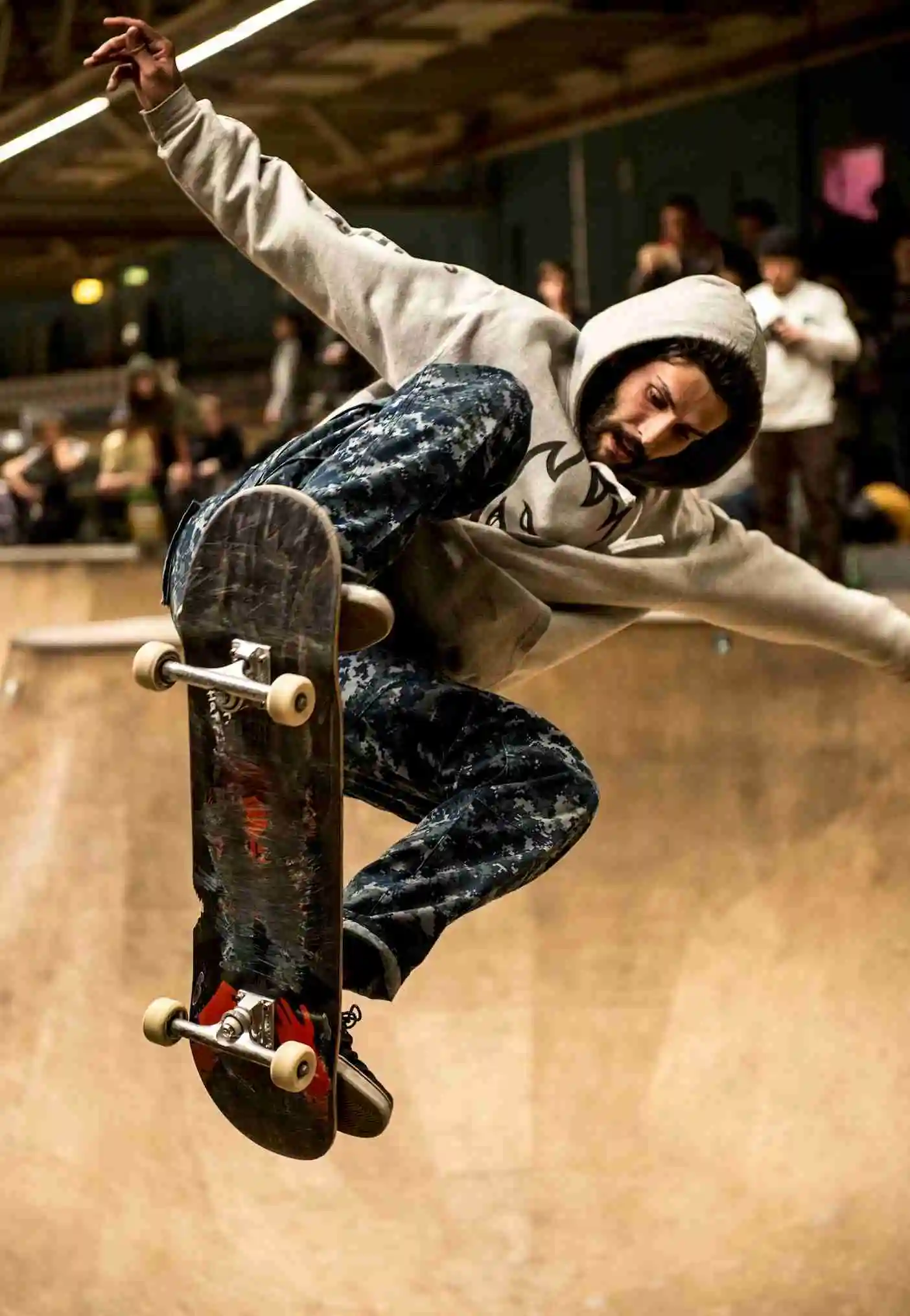Ice hockey stands as one of the most intense and fast-paced sports in the world. At the heart of the game lies speed, not just of the puck but of the players who navigate the ice with incredible agility and swiftness.
This article delves into how fast can ice hockey players skate, exploring how players achieve their remarkable velocities, what influences their speed, and how it impacts the game.

How Fast Can Ice Hockey Players Skate?
Ice hockey players can skate up to speeds of 20 to 25 miles per hour (32 to 40 kilometers per hour).
Speed in ice hockey is not just about moving quickly. It’s a blend of reaction time, strategic execution, and physical prowess.
Players with the ability to skate fast can change the direction of the game, creating opportunities and closing down threats with equal efficiency.
This competitive edge is why speed remains a much-coveted skill among players.
Measuring the Speed of an Ice Hockey Player
How do we quantify the speed of an ice hockey player? Using modern technology, coaches and sports scientists measure skating speeds in training and during games, sometimes seeing players reach speeds over 30 miles per hour.
These measurements highlight the human capability on ice and set benchmarks for aspiring athletes.
Elements that Influence Skating Speed
Physical Attributes
Player speed on ice is heavily influenced by physical strength, particularly in the lower body.
Agility and endurance also play critical roles, as they allow players to maintain high speeds longer.
The power generated in each stride comes from the explosive energy in the legs, making strength and conditioning regimes essential for speed.
Skating Technique
The technique is just as vital as physical prowess. Proper skating form maximizes efficiency and speed, with players focusing on stride frequency and length.
Coaches work extensively on optimizing technique to ensure that players can sustain high speeds throughout a game.
Hockey Skates Design
The design of hockey skates can significantly affect a player’s speed. Advances in blade technology and boot construction improve how skates interact with ice, reducing friction and increasing glide.
Customizations to fit a player’s specific style and body mechanics can also enhance performance.
Training for Speed

Training regimes for ice hockey players often include a mix of on-ice drills and off-ice conditioning.
Plyometrics, sprint training, and strength workouts aim to build the muscle power needed for quick acceleration and speed maintenance.
Coaches may also use video analysis to refine skating technique further and improve overall performance.
Game Situations and Speed Variance
In a game, the need for speed varies depending on the situation. Breakaways and offensive rushes demand quick bursts of speed, whereas defensive plays might require more conservative movement.
Players learn to adjust their speed accordingly, which is a tactical skill honed through experience and coaching.
Safety Concerns and Speed
With high speed comes an increased risk of injury, especially from collisions. The NHL and other leagues implement rules and safety measures to protect players, including advancements in protective gear and strict enforcement of regulations regarding hits and player conduct.
Record-Breaking Skaters
Throughout the history of ice hockey, certain players have set themselves apart with their incredible speed.
Names like Connor McDavid and Pavel Bure resonate as examples of athletes whose skating abilities have left fans and fellow players in awe.
These individuals not only showcase the upper echelons of speed but also inspire the next generation of hockey players.
Technology and Speed Tracking

The use of technology in sports has revolutionized how player performance is analyzed.
Speed tracking systems allow coaches to gain precise insight into a player’s on-ice velocity, offering data that can be used to tailor training and game strategy.
The Role of Mental Preparedness in Achieving High Speeds
The Role of Mental Preparedness in Achieving High Speeds is paramount in the arena of sports, where the distinction between victory and defeat often hinges on milliseconds.
Mental conditioning, a cornerstone of athletic training, equips players with the resilience to perform under the intense gaze of spectators and the high-stakes pressure of competition.
Confidence, a byproduct of meticulous preparation and experience, functions as the athlete’s shield against doubt and fear, enabling them to push their limits and venture into the realms of peak performance.
Focus, the ability to channel one’s entire being into a single moment, plays a critical role in maintaining composure and executing actions at blistering speeds.
This trifecta of mental toughness, confidence, and focus doesn’t just complement physical training but is integral to unlocking an athlete’s full potential.
It allows them to harness their skills and reactions to not just compete, but excel at high velocities, proving that the mind is as pivotal as the body in achieving high-speed excellence.
You may also find interesting: Can You Kick the Puck in Hockey? | What does Fow Mean in Hockey Stats?
Frequently Asked Questions (FAQs)
How fast can professional ice hockey players skate?
Professional ice hockey players can reach speeds over 30 miles per hour, with the fastest skating around 40 miles per hour.
What is the average skating speed of an NHL player?
The average skating speed varies based on position and situation but typically ranges between 20 to 25 miles per hour during a game.
Who is the fastest skater in NHL history?
While hard to precisely quantify due to changes in measurement techniques over the years, Connor McDavid is often hailed as one of the fastest skaters in recent NHL history.
Can certain exercises improve skating speed?
Yes, exercises that build lower body strength, improve agility, and enhance endurance can significantly improve skating speed.
How do ice conditions affect a player’s speed?
Smooth, well-maintained ice allows for better glide and faster speeds, whereas rough or soft ice can slow players down due to increased friction.
Conclusion
The speed of an ice hockey player is a multifaceted attribute, influenced by physical conditioning, technique, equipment, and the tactical demands of the game.
As the sport evolves, so do the methods to maximize player velocity, with ongoing research and technological advancements promising to push the boundaries of what’s possible on the ice.
Whether watching a game or aspiring to improve your own skating speed, understanding the factors that contribute to these remarkable speeds adds a layer of appreciation for the skill and dedication of ice hockey players worldwide.

Matthew James is a passionate skater who wanted to create a platform to share his love for skating with others. With a vision to create a vibrant community of skaters, he aims to provide a space where skaters of all levels can connect, learn, and grow together.
